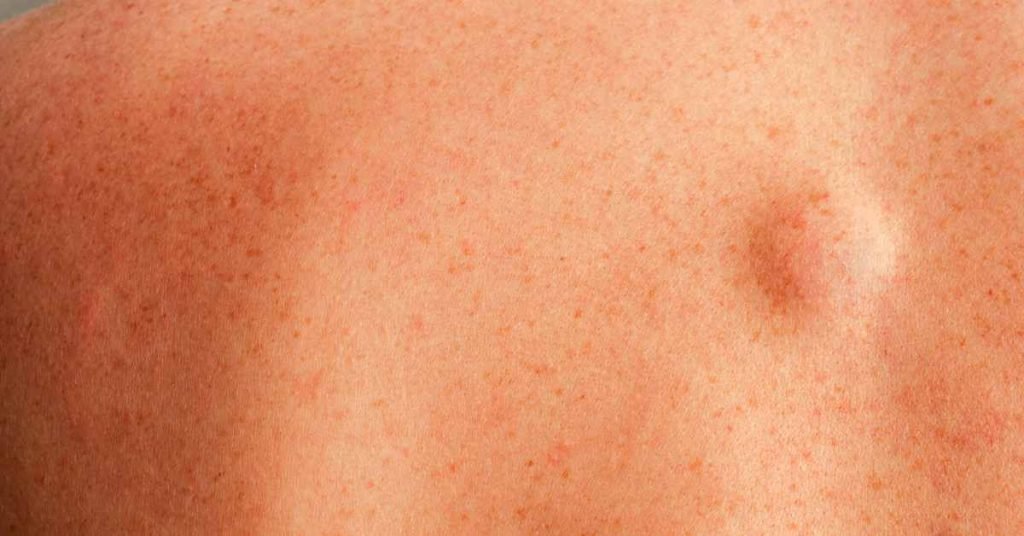Lipomas, benign fatty lumps that develop beneath the skin, are generally harmless but can be a cause of concern for those who experience them.
While conventional medical treatments exist, an increasing number of individuals are exploring alternative approaches, including herbal teas, for managing lipomas.
In this article, we will delve into the potential benefits of herbal teas in treating lipomas, exploring different ways of use, preparing these teas, and understanding the underlying reasons for their effectiveness.
Understanding Lipomas

Before we explore herbal remedies, it’s essential to have a basic understanding of lipomas.
Lipomas are non-cancerous growths of fat cells that accumulate just beneath the skin. They usually feel soft and are movable under the skin, making them easily distinguishable from other growths.
Though lipomas are generally harmless, some individuals may seek ways to reduce their size or prevent their formation.
The Role of Herbal Teas
Herbal teas have been used for centuries in various traditional medicine systems for their potential health benefits.
When it comes to lipomas, certain herbs are believed to possess properties that may aid in managing these fatty lumps.
It’s important to note that while anecdotal evidence and historical use suggest potential benefits, scientific research on the efficacy of herbal teas for lipoma treatment is limited.
Always consult with a healthcare professional before incorporating herbal remedies into your routine.
Turmeric Tea
Turmeric, a bright yellow spice with anti-inflammatory and antioxidant properties, is a popular choice in herbal medicine.
Curcumin, the active compound in turmeric, has been studied for its potential health benefits, including anti-tumor and anti-inflammatory effects.

To prepare turmeric tea:
- Boil water and add a teaspoon of ground turmeric or a fresh turmeric slice.
- Simmer for 10 minutes.
- Strain the tea and add honey or lemon for flavor.
How it may help: Turmeric’s anti-inflammatory properties may assist in reducing the inflammation associated with lipomas. Additionally, its antioxidant effects could contribute to overall skin health.
Dandelion Root Tea
Dandelion root has a long history of use in traditional medicine for its diuretic and detoxifying properties. It is believed to support liver health, which plays a crucial role in the body’s detoxification processes.
To prepare dandelion root tea:
- Boil water and add a tablespoon of dried dandelion root.
- Steep for 15 minutes.
- Strain and enjoy.
How it may help: By supporting liver function, dandelion root tea may contribute to the body’s natural detoxification processes, potentially assisting in the reduction of lipomas.
Red Clover Tea

Red clover is a flowering plant known for its phytoestrogen content. Phytoestrogens are plant compounds that may have estrogen-like effects on the body.
To prepare red clover tea:
- Steep one to three teaspoons of dried red clover flowers in hot water for 10-15 minutes.
- Strain and drink.
How it may help: Some lipomas are thought to be hormonally influenced, and red clover’s phytoestrogens might have a regulatory effect on hormonal balance, potentially affecting the growth of lipomas.
Ginger Tea
Ginger has anti-inflammatory and antioxidant properties, making it a popular choice in herbal medicine for various conditions.
To prepare ginger tea:
- Peel and slice fresh ginger.
- Boil the ginger slices in water for 10-15 minutes.
- Strain and add honey or lemon if desired.
How it may help: The anti-inflammatory properties of ginger may contribute to reducing inflammation associated with lipomas. Additionally, ginger’s antioxidant effects could support overall skin health.
Green Tea

Green tea is renowned for its high levels of antioxidants, particularly catechins, which have been studied for their potential health benefits.
To prepare green tea:
- Steep a green tea bag or loose leaves in hot water for 2-3 minutes.
- Strain and enjoy.
How it may help: The antioxidants in green tea, particularly epigallocatechin gallate (EGCG), may have anti-inflammatory and anti-tumor effects, potentially influencing the development and growth of lipomas.
Final Word
While herbal teas are often celebrated for their potential health benefits, it’s crucial to approach their use in treating lipomas with caution.
Scientific evidence supporting the efficacy of herbal teas for lipoma treatment is limited, and individual responses may vary.
It’s advisable to consult with a healthcare professional before incorporating herbal remedies into your routine, especially if you are already undergoing medical treatment for lipomas.
The potential benefits of herbal teas in managing lipomas lie in their anti-inflammatory, antioxidant, and detoxifying properties.
Turmeric, dandelion root, red clover, ginger, and green tea are among the herbal options that individuals explore.
While these teas may offer a holistic approach to support overall health, they should not be considered the sole treatment for lipomas.
A combination of a healthy lifestyle, proper medical guidance, and, if desired, the incorporation of herbal teas may contribute to a comprehensive approach to managing lipomas.
MEDICAL DISCLAIMER
Itsnevernotteatime.com cannot and does not contain medical/health advice. The medical/health information is provided for general and educational purposes only and is not a substitute for professional advice.




